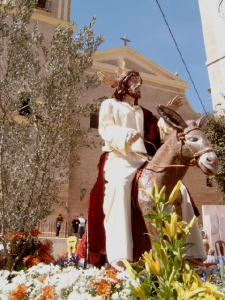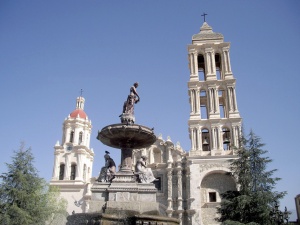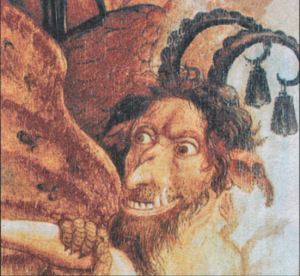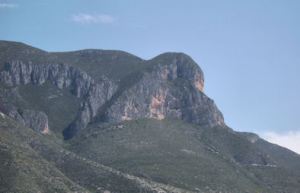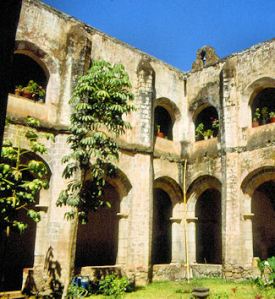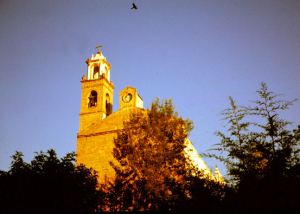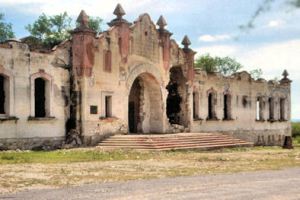THE RABBIT AND THE COYOTE
Mexican folktale from Galeana, N. L.
There was once an old woman who had a small farm with lettuce, radishes and beets, and there was a bunny that came every night to find something to eat. Tired of it, the old lady put traps, but the bold rabbit was never caught. One day the old lady thought:
«Next time I will put as bait a glued scarecrow, to see if that scares the rabbit does not come anymore.»
The days passed and the rabbit kept coming to feast at the farm. When he saw the scarecrow, he began to mock it, but as this did not answer, the rabbit said, «Look, monkey, I will beat you up until you plead no more. And so he did, the rabbit started beating it up until he was stuck. That day the old lady was not around, so she did not realize that the rabbit had been caught. However, a hungry coyote was passing by and got him. But the bunny, very clever, said:
“Please do not eat me, coyote. Look, you see that herd over there? Tell me which goat you like and I’ll bring to you immediately.
Since this coyote was a bit silly, he believed the 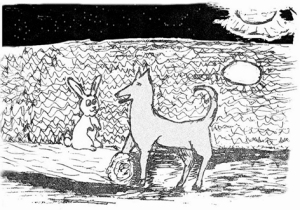 bunny. So it happened that when he helped the rabbit free, he ran away as fast as he could and only his ears moving were seen. The coyote waited for the goat, but only waited.
bunny. So it happened that when he helped the rabbit free, he ran away as fast as he could and only his ears moving were seen. The coyote waited for the goat, but only waited.
A couple days later the coyote happened to find the rabbit again and said:
“I caught again, bunny. The other day you cheated me and now I’m going to eat you”.
«No, Coyotito, let me explain”, said the rabbit. “I caught the goat as I said I would, but when I went looking for you I did not find you, so I decided to make this chicharrones, from that goat. So here you see me preparing. Hm … they’re just about ready. Would you like some?!
“All right, the coyote said, let’s eat”.
With his hand the coyote began to stir the pot where there were supposed to be the chicharrones, but were not such –it was a buzzing hive of bees, producing a noise as if something were frying. In the meantime, the rabbit ran away again as fast as he could, while the foolish coyote realized that he’d been tricked again.
The following night, the rabbit was eating a radish in the farm of the old lady when the coyote stalked from behind and caught him.
“Look, tricky rabbit, I’m really starving and there is no choice but to eat you. After all you’ve mocked me twice”.
When he was about to take a bite, the rabbit said:
“No, Coyote, don’t be silly. Do you really think you’ll have enough with a little bunny like me? Look, do you see that bag over there? Well, that’s a sheep that I caught for you, and if you eat it you’ll have plenty for two or three days. What do you think?”
The coyote got excited and ran to take the bag with the sheep inside, but when he took the first blow he just made a howl of pain. It was a cactus and had thorns! The rabbit had fooled him again.
Time passed and again the coyote found his enemy, this time on the shore of a lake.
“Look, wretched rabbit, now I’m going to eat, he said. You’ve tricked me three times and I will not leave without eating you this time”.
“But Coyotito my friend, before you eat me you should know that I’ve been looking for you because I found a really big cheese, but it fell into the lake and I can’t reach it with my little hand for it’s very short”, explained the rabbit. I was thinking about a solution to get the cheese out of the lake and I think that between the two of us can do it. What do you think, either you hold me until we can retrieve the cheese from the water or I hold you”.
They were discussing who clutched the hand of whom until he finally agreed. They agreed that the rabbit was going to hold the coyote because the coyote had longer arms and could reach the cheese easily. But what the coyote did not know is that the cheese was actually the full moon reflected in the water. Neither did he suspect the rabbit’s plans. When the coyote was already in the water, the rabbit let go and the poor coyote drowned.
In many Mexican indigenous stories as well as ethnic groups in the North American desert, there is a series of stories where the protagonists are a rabbit and a coyote, and the winner can be either. Usually, that kind of story has a moral implication, which is a conventional feature on this literary genre.
In the version we just read, narrated by Milton de la Peña, a student of Geology in Linares, who tells us that it is still popular in the mountainous region of Iturbide, the symbols are the same: a coyote, an animal trickster that usually gets what he wants, whose nature is in folklore dual, because apart from cheating is also a cultural hero, as it provides knowledge of the arts and he did not allowed fire to extinguish, thus protecting the human race. And a rabbit, also in the folklore of some people is a trickster and liar animal, but is equally benefactor, as he brought fire from across the sea for the benefit of mankind, thus demonstrating its dual nature, similar that of his opponent.
 This story was originally published in the book Myths, Tales And Legends of Nuevo Leon, by Editorial Font, 2005. Monterrey, Mexico.
This story was originally published in the book Myths, Tales And Legends of Nuevo Leon, by Editorial Font, 2005. Monterrey, Mexico.
The book, by Homero Adame, was edited by Deborah Chenillo Alazraki and designed by Beatriz Gaitan. The drawing was made by Jennifer Hennen.
You can read more Mexican folk stories and legends on this link:
Myths, legends and traditions of Mexico


